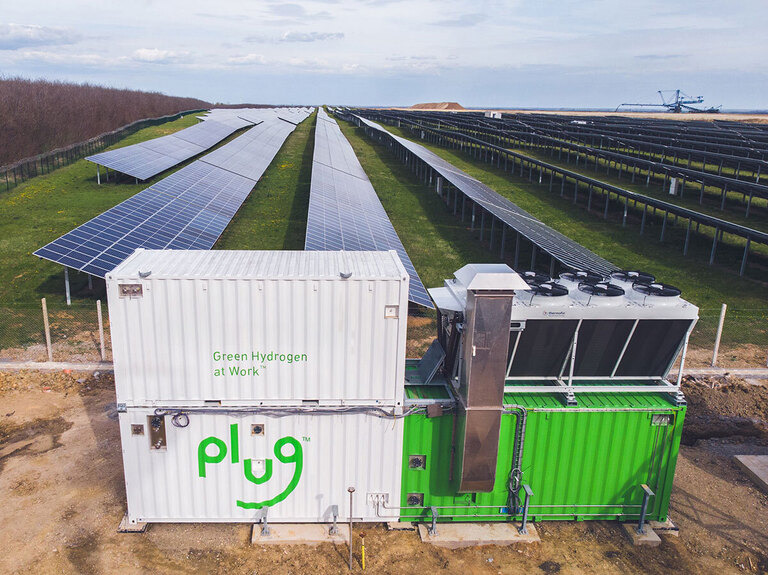Introduction
GE Vernova [GEV] is a Cambridge, Massachusetts-headquartered company that manufactures equipment for the sustainable energy sector.
A spinoff from the notably less sustainability-focused General Electric, GEV’s stock has performed broadly well since it floated on the New York Stock Exchange on April 2, 2024, alongside GE Aerospace [GE].
After its Q1 2025 results were announced on April 23, is the stock set to reach new highs, or could the spark begin to fade?
GEV Updates
GEV’s Q1 2025 results saw the firm surpass expectations. With orders totaling $10.2bn for the quarter — propelled by growth of 43% in the power equipment segment — and backlog growth of $4.4bn, the future could be looking bright for the energy firm.
CEO Scott Strazik was optimistic: “I’m excited for what’s ahead as we are only at the beginning of the electricity investment supercycle.”
Elsewhere in the business, the firm’s expansion in Japan’s power sector continues. GE Vernova’s Goi Thermal Power Station in the Greater Tokyo Area became operational on April 17, adding 2.3GW of electricity to the country’s grid — enough to power 2.2% of Japanese homes.
Earlier, on April 3, the company’s wind turbines began operating as part of the Abukuma wind farm, the largest in Japan. Located in Fukushima, Abukuma is run by a consortium of nine companies, including GE Vernova and Japan’s Sumitomo Corporation [SSUMY].
In Europe, GEV secured an agreement to provide eight turbines to a 49MW onshore wind project in Spain and submitted its final proposal to Great British Nuclear’s ongoing small modular reactor selection competition in the first full week of April.
How Has GEV Stock Reacted?
Up 155.29% since its flotation in April 2024, GEV has had a rockier time in the year-to-date. Up just 9.52% since January, growth seems to have slowed from its initial price explosion.
That said, a combination of the Spain wind project and Q2’s dividend announcement drove GEV up an impressive 13.91% between April 8 and April 9.
As optimism surrounding Q1 earnings built from April 21, the stock began to climb again, peaking 15.14% higher by April 24’s close, followed by a 3.31% climb after the results.
How Does GEV Measure Up to Competitors?
While GE Vernova has finally achieved an EPS estimate beat with Q1 2025 results, reversing two consecutive quarters of misses, Hitachi’s [HTHIY] tide has turned in the other direction. Following an impressive 58.82% EPS beat in Q1 2024, the firm then missed by 25.96%, 14.36% and 12.54% in the next three quarters.
Despite this, of the 17 analysts tracking Hitachi on TradingView, 10 rate it a ‘strong buy’ and five a ‘buy’. The remaining analysts rank it ‘hold’, with none suggesting selling stock.
Contrastingly, Bloom Energy [BE] has 28 analysts tracking it, with 10 ‘strong buy’, three ‘buy’ and 12 ‘hold’ rankings. Two analysts rate the stock a ‘sell’, with one rating it a ‘strong sell’.
GEV | HTHIY | BE | |
Market Cap | $101.21bn | $113.27bn | $4.22bn |
P/S Ratio | 2.90 | 1.86 | 2.83 |
Estimated Sales Growth (Current Fiscal Year) | 5.60% | 4.7% | 17.37% |
Estimated Sales Growth (Next Fiscal Year) | 8.85% | 8.6% | 20.32% |
Source: Yahoo Finance; TradingView
Hitachi released its Q4 and FY 2024 earnings on April 28, reporting a modest 1% increase in revenue, although it saw an uptick in demand for its digital transformation and green energy and mobility segments. The earnings presentation noted the potential impact of US President Donald Trump’s tariffs, and the stock has been trading largely flat since mid-February.
Bloom Energy, meanwhile, reported on April 30, with its balance sheet showing record 38.6% year-over-year growth in its Q1 2025 revenue, and the company largely reaffirming its guidance for the year. The good news has yet to lift the stock, which remains down 17.51% in the year through April 30.
GEV Stock: The Investment Case
GEV is certainly holding its own in a sector that could prove crucial in the expansion of generative artificial intelligence and data management.
The Bull Case for GEV
There are several reasons for those interested in GEV to feel positive following Q1 earnings.
A Solid Return to Profits
Q1 saw GE Vernova return to profitability: $264m profits recorded versus a loss of $106m in the same quarter last year.
At $0.91 per share, EPS came in well above the loss of $0.47 per share a year prior.
If the firm can maintain such solid financials — which its pipeline, outlined below, suggests it might be able to — then its star could continue to rise.
Order Pipeline
One of the most encouraging elements of the Q1 2025 earnings report was the increasing strength of their order pipeline.
With $4.4bn of additional orders in the backlog, and 29GW of gas power equipment backlog — driven in part by surging demand from US data center customers — the mid-term future looks stable.
The Bear Case for GEV
While GEV appears to be in the midst of an impressive run, there are potential sticking points down the road.
Hot Air
The wind energy sector is notoriously difficult to navigate.
Limited order demand and continuing problems with the offshore backlog could put question marks over the firm’s ability to maintain profit margins, at least in the short term.
Tariff Risks
A familiar threat to businesses based in and/or selling to the US at the moment, GE Vernova has factored tariff issues into its projections, estimating $300m–400m in tariff-related costs in 2025.
That said, the unpredictability with which tariffs are being implemented means it would be hard for any business operating in global markets to accurately estimate the risk.
Conclusion
GEV’s Q1 2025 results have certainly powered the stock higher in the immediate term, and the report looked ahead to some promising future projects. The company will likely be aiming to maintain investor optimism and deliver on its promising pipeline in order to keep its share price climbing.
Disclaimer Past performance is not a reliable indicator of future results.
CMC Markets is an execution-only service provider. The material (whether or not it states any opinions) is for general information purposes only, and does not take into account your personal circumstances or objectives. Nothing in this material is (or should be considered to be) financial, investment or other advice on which reliance should be placed. No opinion given in the material constitutes a recommendation by CMC Markets or the author that any particular investment, security, transaction or investment strategy is suitable for any specific person.
The material has not been prepared in accordance with legal requirements designed to promote the independence of investment research. Although we are not specifically prevented from dealing before providing this material, we do not seek to take advantage of the material prior to its dissemination.
CMC Markets does not endorse or offer opinion on the trading strategies used by the author. Their trading strategies do not guarantee any return and CMC Markets shall not be held responsible for any loss that you may incur, either directly or indirectly, arising from any investment based on any information contained herein.
*Tax treatment depends on individual circumstances and can change or may differ in a jurisdiction other than the UK.
Continue reading for FREE
- Includes free newsletter updates, unsubscribe anytime. Privacy policy





